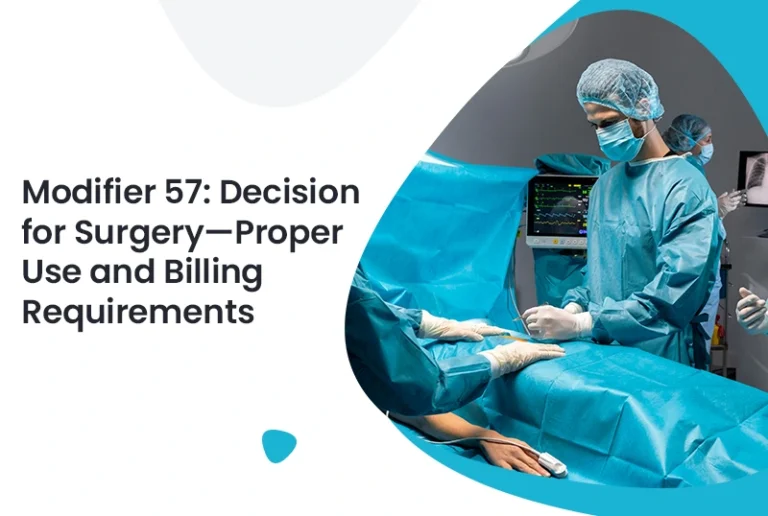When it comes to clinical care, the debate of PA or NP often centers on education and scope of practice. However, one of the most critical and often misunderstood distinctions lies in their billing differences. For medical practices, understanding how billing works for a PA or NP can directly impact reimbursement, compliance, and overall revenue.
At the core, both provider types offer overlapping services. But how they’re billed, reimbursed, and credentialed with insurers differs significantly. If you’re considering hiring a PA or NP for your practice or optimizing your existing setup, keep reading to understand how these differences affect billing operations. This insight can also help streamline your billing services medical to ensure accuracy and profitability.
Education and Role Comparison
Before diving into billing nuances, it’s essential to understand the professional background of each role. Both Physician Assistants (PAs) and Nurse Practitioners (NPs) are classified as advanced practice providers (APPs). However, their paths differ:
- PA: Trained in the medical model, PAs work under a supervising physician’s license.
- NP: Educated in the nursing model, NPs often have more independence and may practice without physician oversight in some states.
Though clinically capable of delivering similar services, billing policies often vary due to how each role is regulated and reimbursed by payers like Medicare and commercial insurers.
Billing Under Medicare and Commercial Insurance
The primary difference between PA or NP billing is how each is reimbursed. While both fall under the category of non-physician practitioners (NPPs), subtle but significant distinctions exist.
- Reimbursement Rates: Medicare typically reimburses PAs and NPs at 85% of the physician fee schedule when services are billed under their own National Provider Identifier (NPI).
- “Incident-To” Billing: Both PAs and NPs may be eligible for “incident-to” billing, allowing practices to receive 100% reimbursement. However, the requirements are strict and apply more flexibly to NPs in some cases.
- Supervision Requirements: PAs must always have a supervising physician, which influences billing. In contrast, depending on the state, NPs may bill independently.
These nuances make it vital for clinics to understand the ideal structure for staffing a PA or NP depending on billing strategy and regulatory compliance.
Want more information? Read here: Copay vs Deductible: What Do These Terms Really Mean?
Credentialing and Enrollment Differences
Another key aspect to consider is credentialing. Insurance credentialing and provider enrollment requirements vary between PA or NP, particularly when it comes to commercial payers.
- PA Credentialing: Some private insurers may not credential PAs directly, requiring services to be billed under the supervising physician.
- NP Credentialing: NPs are more likely to be credentialed as standalone providers due to their state-sanctioned autonomy.
To avoid denials or delays, practices must align their credentialing process carefully. Streamlining this process through reliable credentialing services ensures compliance and faster payer onboarding.
Scope of Practice and State Regulations
Each state sets its own scope-of-practice laws for PAs and NPs, and these regulations heavily impact billing flexibility. In full-practice states, NPs can operate independently, bill under their own NPI, and avoid the added complexity of physician oversight. PAs, on the other hand, are generally tied to a supervising physician.
- Full-Practice States: Favorable for NPs in terms of independent billing.
- Reduced/Restricted Practice States: May require more oversight, limiting both PA and NP billing potential.
When planning staffing models or expanding your practice, state-specific rules should guide whether a PA or NP is more efficient from a billing perspective.
Modifier Use and Documentation Requirements
Billing for either PA or NP requires careful use of modifiers and documentation. Here are some common billing elements to be aware of:
- Modifier SA: Used when a NPP provides a service in place of a physician.
- Modifier GC: Indicates a teaching physician’s involvement.
- Documentation: Must clearly outline the role of the PA or NP, including supervisory relationships, if applicable.
Incorrect documentation can lead to claim denials or audits, especially for high-level services. Practices should regularly audit their PA or NP documentation to ensure alignment with payer policies and CMS rules.
The Role of PC Ratio in Staffing and Billing
Staffing decisions often depend on the provider-to-clinician ratio, especially when balancing physician oversight with productivity. The pc ratio in medical billing helps measure the number of support staff (PAs or NPs) a physician can effectively manage while maintaining billing compliance.
A low PC ratio may indicate underutilized providers, while a high ratio may risk supervision lapses. Understanding the ideal PC ratio is key to scaling your practice without compromising billing accuracy or quality of care.
Which Is More Cost-Effective to Hire: PA or NP?
While clinical duties are similar, the cost-effectiveness of hiring a PA or NP depends on your practice location, payer mix, and staffing needs. Here are a few considerations:
- NPs may bring higher billing autonomy in full-practice states.
- PAs may integrate well in physician-led models and group practices.
- Consider the ease of payer credentialing and reimbursement rates.
Ultimately, the right choice of PA or NP should align with your practice’s financial goals, patient load, and billing capabilities.
Final Thoughts
When evaluating whether to hire a PA or NP, billing structure should be a top consideration—not just clinical qualifications. Differences in supervision requirements, credentialing, and reimbursement make it essential for practices to conduct a thorough comparison before deciding.
Accurate billing leads to better revenue and compliance. Aligning your billing strategy with your provider model helps maximize profitability. For tailored support in managing your PA or NP billing, claims, and documentation workflows, consider working with the experts at Precision Hub.
(FAQs) Frequently Ask Questions
Q1: Who can bill independently—PA or NP?
NPs can often bill independently in full-practice states, while PAs usually require a supervising physician.
Q2: Do PAs and NPs get paid the same by Medicare?
No. Both receive 85% of the physician fee schedule, but reimbursement may vary based on supervision and “incident-to” billing eligibility.
Q3: Is it easier to credential a PA or NP?
NPs are more frequently credentialed as independent providers. Some payers don’t credential PAs directly.
Q4: Does state law impact billing for PA or NP?
Yes, significantly. State regulations determine autonomy, supervision requirements, and whether a provider can bill independently.
Q5: Which is more cost-effective for small practices—PA or NP?
It depends on your location and payer mix. NPs may offer more billing flexibility in independent practice states.







